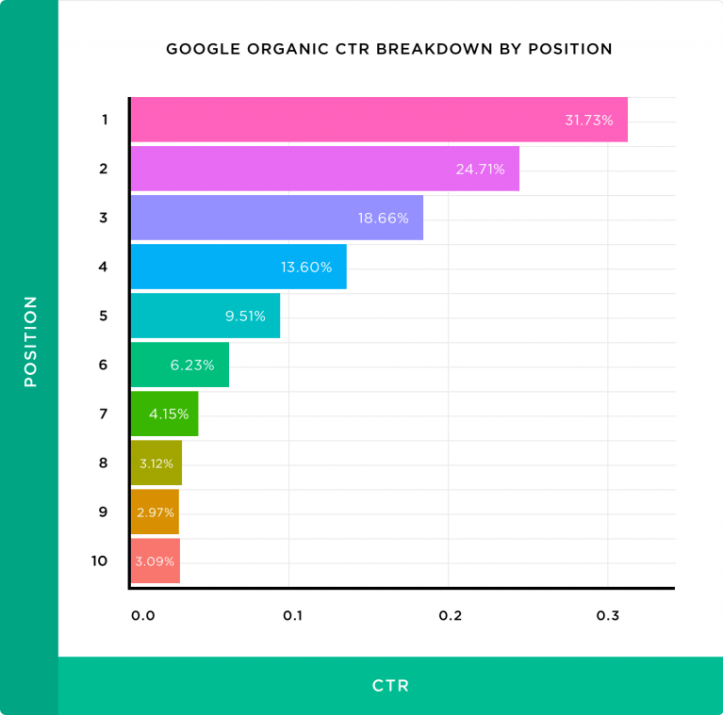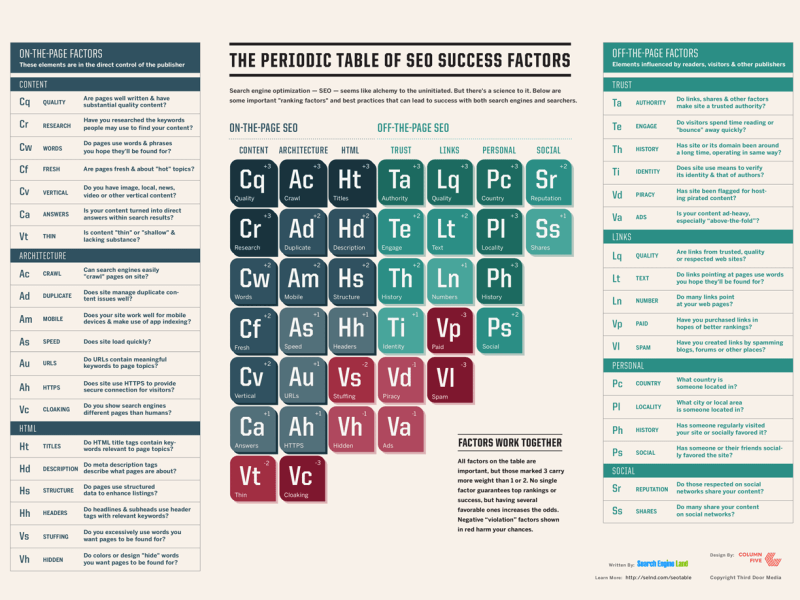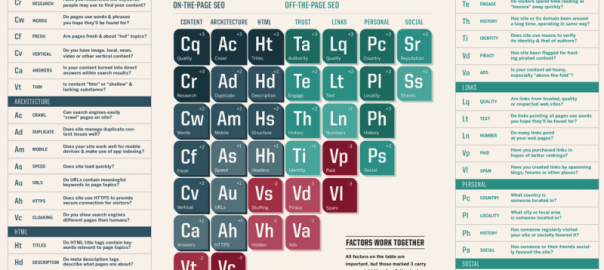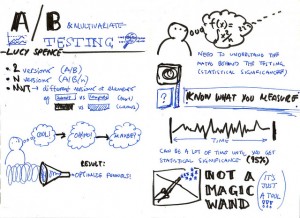 Photo by Gerd Altmann from Pixabay
Photo by Gerd Altmann from Pixabay
OK, I warn you this post is pretty long. That’s because there’s speculation that over 200 Google Ranking Factors exist. Of course, others, including the leading SEO company, MOZ, decry such a list of ranking factors exist, even as a speculation. You might ask, “why is there so much speculation about Google Ranking Factors and why such disagreement?” And, you’d be right to ask.
The problem is that Google doesn’t publish a list of the many ranking factors used to determine where a link shows up in a user’s search, resulting in much speculation and a multitude of experiments (called Monte Carlo trials) designed to ferret out factors that impact a link’s ranking.
Today, I’ll start at the beginning and, while this isn’t a comprehensive list of all factors impacting search results (called SERPs — search engine results pages), I’ll give you my take on which elements to focus on based on my extensive reading and experience.
Why you should care about Google Ranking Factors
Google uses “more than 200” ranking factors to determine which links show up where in search results, according to Matt Cutts, the head guru for search at Google.
To understand how ranking factors impact search results, let’s look at the search process.
First, you create content — images, text, video, etc. Google employs bots that continuously scan the Internet (referred to as crawling) looking for this new content (ignoring for a moment the existence of the dark web, and internal pages on websites that the bots ignore). The bot locates and maps new content and the keywords and phrases representing this content so that, when a user enters a search query, Google knows precisely which pieces of content might address that query.
Ranking factors then take that lexicon of content to generate an ordered list (SERPs) of content that addresses the user’s query with the “best” content displayed first in the results that often go on for hundreds of pages.
Human nature being what it is, users are most likely to select the first search result offered by Google (and, through training, they often ignore the paid search results provided first and identified as ads). That’s where SEO comes in as content creators seek to gain that coveted first position in the organic search results.
Here’s an analysis of the click pattern based on a link’s position in the SERPs from Backlinko:

Note that just over 75% of the clicks go to links in the top 3 positions in SERPs. Once your link migrates to the second page of results, the number of clicks it receives dwindle markedly.
Takeaway: you want your links to show in the top 3 positions for keywords related to your business.
Showing up in 1st position for other keywords helps drive traffic to your website, enticing visitors to read content not available on the first page of SERPs. But, in general, focus on keywords strongly related to your key business function and do your best SEO to show up at the top for these keywords. Also, develop content to drive sales since you care about revenue more than traffic, so driving traffic is only the first step toward market success.
The level of competition for a keyword profoundly impacts your ability to show up on top in SERPs. Google offers a tool to help plan keywords effective by offering alternate suggestions to your keyword as well as an estimate of both the number of monthly queries for that keyword and level of completion. The key is to find keywords with a large number of searches and low competition. Often, this is impossible, requiring a firm to balance the amount of search with the amount of competition.
Hence, if you sell women’s shoes, you may find the keyword “women’s shoes” represents a large number of queries but also very intense competition. Showing up high in the SERPs may not be feasible. Instead, you might focus your efforts on keywords like “black pumps for women” to help your SEO strategy succeed. If you’re a local business, be sure to include your location as part of your keyword strategy.
Takeaway: choose keywords carefully by balancing the number of monthly searches with the level of competition for the keyword while focusing on your target visitor.
Changes to Google’s Ranking Factor
The ranking factor isn’t a stable measure used since time immemorial. It’s dynamic and changes all the time. Some changes are subtle, while others make a dramatic impact on how your content ranks.
The goal for Google in ranking content is to satisfy users. If you’re old enough to remember the origins of Google (and, unfortunately, I’m in that group), Google had lots of more substantial, better-funded competition in the search engine game. Google was just 2 guys working insane hours to build an engine to optimize user satisfaction, and it worked. Now Google, as a search engine, dominates the world.
To ensure its place as the preferred search engine, Google uses its algorithm (those 200+ ranking factors) to deliver on its promise to provide what users want. So, whatever you do when creating content, that should be your first goal — satisfying your target audience with great content. If you do that, your content stands the test of time as Google blithely changes its algorithm both in terms of factors and the weight assigned to each factor.
As an example, just a few years ago, businesses used a strategy called content stuffing to improve their ranking. Content stuffing involved writing nonsense content stuffed chock full of your chosen keyword. This content was useless. In response, Google made a massive change to the algorithm so that links featuring content stuffing now received a penalty rather than being bumped to the top of the list. Once Google made the change, all your content created based on keyword stuffing now hurt your business.
My website was around before this significant change to Google’s algorithm. My SEO expert at the time constantly scolded me that I didn’t include enough keywords in my content. I didn’t listen because I was passionate about creating content that readers found valuable. I guess that’s the professor in me (you know, of course, that I’ve taught marketing at universities for over 25 years). Still, I wanted to educate my readers not play games to get more people to read nonsense — if I wanted to do that, I’d write another academic paper no one would ever read.
Takeaway: always writing content you’re proud of, content readers find valuable, and your ranking will improve over time.
Types of ranking factors
Now, we finally get to the meat of ranking factors: which factors most heavily impact your position in search results?
To help, I’ve organized these factors around common themes. Guiding my organization is the SEO success factors table below.
 Image courtesy of Search Engine Land
Image courtesy of Search Engine Land
Now, this table is a little old, so I’ll update it as we go along.
On-page ranking factors
If you boil everything about on-page ranking factors down to a single sentence that would be:
creating valuable content on a consistent basis
Everything else about on-page SEO just details specifics that impact ranking. Here are just a few of the on-page factors influencing your rank:
- Title tags also called H1 tags. You should only have 1 H1 in your content, and it should be in the title
- URL – your URL should contain the keyword you’re trying to rank for
- Image alt tags — alt tags are specified when you embed images within your content and should include your keyword
- The keyword makes up part of your meta description
- The content is visible to the public rather than hidden behind a login or subscription
- Linking to other pages on the website such as the home and category pages
- Outbound links to high authority sites — when you include links to other sites that rank well, you show you’ve done your homework to create exceptional, reliable content. These links act like references in a journal article
- Load speed impacts your page’s ranking so cache pages, shrink the size of images, and embed video using a link to YouTube or another site for hosting the video
- Mobile-friendly content
- Well-written content that adheres to spelling and grammar conventions (I use Grammarly to ensure my content is at its best)
- Images show content quality so include a minimum of 1 image
- Inbound links from other sites, especially high-authority websites signal the value of your content
- Bulleted or numbered lists appear to help your ranking as they’re snackable and showing them in search results often answers the user’s question or gives clear guidance on whether reading the remaining content answers their question
By the same token, there are elements to avoid when creating content for your website, such as:
- content stuffing — using more than a reasonable keyword density makes it look like you’re trying too hard and indicates the content likely has little to no value
- short content — commonly, you want longer content. In fact, most of the content links displayed at the top of a results page contain more than 1500 works based on correlation studies [source]. This advice seems reasonable when you consider that depth is often essential for answering a user’s query
- duplicate content hurts your ranking, so avoid it like the plague
- broken links on a page indicate you’re not too careful or don’t update content frequently
Website ranking factors
Website factors often apply to the entire website; hence, the entirety of your content supports (or detracts from) individual pieces of content. Some website factors to consider include:
- Security with sites containing HTTPS favored over sites not secured
- Domain authority
- Domain age
- Architecture or navigation is easy to understand
- Trust factors such as a public “who is”, a contact us page, and a statement of your privacy policy
- Sitemaps updated as new content is added — these help Google crawl your website
- Mobile-optimized
Off-page SEO
Off-page SEO refers to activities that occur outside of your website. Things like product quality and excellent customer service that drives recommendations (called brand mentions), social mentions created through engagement on social platforms, guest blogging on other websites, and influencer marketing tactics help your off-page SEO efforts.
Conclusion
I’ve only mentioned a fraction of the factors that impact your rank in SERPs, and there’s a lot of disagreement among SEO experts as to the validity of these factors and their relative impact on your ranking, so take this with a grain of salt. At a minimum, you won’t hurt your ranking by taking this advice to heart as you create content. And, as Google’s algorithm changes, following this advice will likely still help your rank.
Digital & Social Articles on Business 2 Community
(61)







